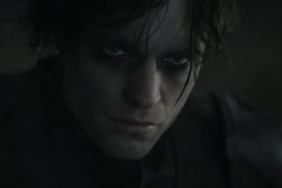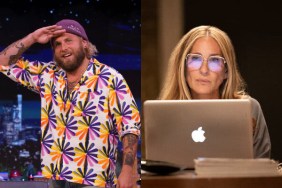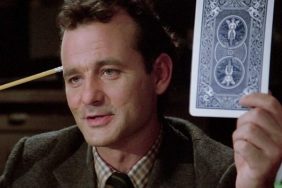Rick Famuyiwa was born and raised in Inglewood, CA and it shows. He has now made a few films that deal with the character of the city, the people that live in it, and the glories of being from there. His latest, Dope, out in theaters this Friday, takes place in Inglewood, and follows a teenage boy – an outsider of sorts, very much like himself – as he tries to traverse the rough neighborhoods known as The Bottoms. It’s also a film about young people who are obsessed with early 1990s hip-hop – right down to the super-high flat tops and puffy moon boots – allowing Famuyiwa to explore the modern day and his own personal heyday with equal enthusiasm. Dope has been widely praised by critics, and was one of the more notable films to come out of this year’s Sundance Film Festival.
CraveOnline got to sit down with Famuyiwa to talk about his hometown, how the place inspires him, and, of course, the kind of (perhaps embarrassing) music that he listened to at age 12.
Check Out: ‘Dope’ Star Shameik Moore on How Moderns Teens View the ’90s
CraveOnline: First off, a nice big pretentious question. You’re from Inglewood, CA. You’ve made several movies about it now. Could you describe Inglewood to someone who hasn’t been there? What is Inglewood?
Rick Famuyiwa: Let’s see. Inglewood is a microcosm of Los Angeles. It’s a city by the airport. It’s the first city when you’re coming into L.A., and the last city when you leave. And so, in many ways, it takes on the character of the larger city itself. So it has a very upper class, and affluent places, and it has a very low and financially struggling places, and everything in between. It’s a city that was once predominantly all white, and then during the ‘60s and ‘70s it rapidly transformed into one that was mostlyAfrican-American. These days it’s about 60/40 black and Latino.
There you go. History of Inglewood.
How do you feel about Inglewood these days? Love? Ambivalence?
I love it! It’s where I grew up. It’s sort of my home base. And I still have a connection to it. It’s where I met the key friend that I still, well, they’re still my best friends to this day. It holds a very special place for me. It always will. I love the city. It’s sort of my muse. And, in some ways, [it] serves me the same way New York serves Woody Allen, or Kansas City serves Robert Altman. Omaha for Alexander Payne.
From film to film, how does the character of Inglewood change? How is the Inglewood of The Wood different from the Inglewood of Dope?
I think The Wood was probably more concerned with the parts of Inglewood that aren’t usually seen on film – the areas that were middle-class, or upper-middle-class – and that idea that these worlds do exist, and should be accepted as part of Inglewood itself. Dope isn’t really concerned with that. It’s more concerned with the kids that live in the parts of the city that are often called “The Bottoms.” And so the kids have to deal with a lot of a lot of different things.
And I lived in a lot of those different worlds. Sort of in between The Bottoms and Ladera Heights. That’s where I was, and I had friends all throughout. The Wood was sort of like American Graffiti for me in a lot of different ways. Dope, I think, is about something else.
The teenage character of Malcolm seems very closely based on you. Although Dope takes place in the present day, is it very autobiographical?
Yeah. I think Malcolm as a character is very much like me and reflects my point of view. And my obvious way of pointing that out was in his surname which is my mom’s maiden name. Which connects me: here is a kid with an African last name that lives in Inglewood. And a lot of other things, like he didn’t fit in. And so, yeah, Malcolm I think is very much me. There are definitely parts of the story that came from my own life. I can definitely say that. Most of it was just a construction, conspired by the spirit of how I saw the world.
No other characters based on real people?
Well, yeah. I mean, I think there’s as much as any film can posit. Dom and Bug and a lot of those characters were probably composites of people I knew and grew up with. As well as Jib. These were all people that I knew. Two or three of them made up each of these individual characters. But in a lot of ways, these folks were influenced by people I knew growing up.
How did you go about casting Malcolm? How does one cast oneself?
How is by a really long and difficult process. Obviously Malcolm has to be something very specific, and be able to embody all that, and to find and actor who can embody all that was a challenge. And so I got to a point in the process where I had seen a lot of good actors and some not-so-good, but feeling that no one could crack all the different layers of what I was looking for for the character.
So when Shameik [Moore] sent in his tape from Atlanta, I said “that’s it.” I took a look that that tape, and it was sort of a revelation. He so naturally embodied so much of how the character moved as I was writing the script. It just sort of came from the honesty of his portrayal and his ability to be truthful in all those different moments. It was all in his audition. He sort of “found me” in that way, on that tape. I don’t really know who would’ve played Malcolm if not for Shameik. I probably wouldn’t have found someone, and maybe we wouldn’t be here talking right now.
Dope takes place in the present day, but the characters are obsessed with the early ‘90s. You and I are about the same age, so we have similar nostalgia for the time. Why didn’t you set Dope in the early 1990s?
Well, one, I wanted to deal with the voice and the topics that are very much today. From acknowledging social media that connects us, to just the idea of young black men and how they’re perceived in the world. I was living through and writing as Trayvon Martin was happening, and I felt like I wanted it to be a contemporary story. At the same time, I wanted elements of nostalgia and whatever I wanted the early ‘90s to be. But anytime you want to set a film in a certain period, people go “Well, that’s not me!” and they don’t connect with it.
So I wanted it to feel “black today,” but I also wanted to deal with elements of the era I grew up in. Both informed and created the groundwork for how these kids live their lives today, using a common cultural language that we all share. That language came from the ‘90s, with how hip-hop exploded in that era.
I’m still very fond of the hip-hop of that era. Partly from nostalgia, but it was also really good.
Yeah! It still is, yeah.
What was the first record you bought with your own money?
I’m probably going to be ashamed to say this… It was a Sir Mix-a-Lot album. [Laughs.] I think I was 12, 13. I had just enough money for the “My Posse’s on Broadway” single, so I bought that single. That was the first thing I bought with my own money.
Witney Seibold is a contributor to the CraveOnline Film Channel, and co-host of The B-Movies Podcast. You can follow him on “Twitter” at @WitneySeibold, where he is slowly losing his mind.









